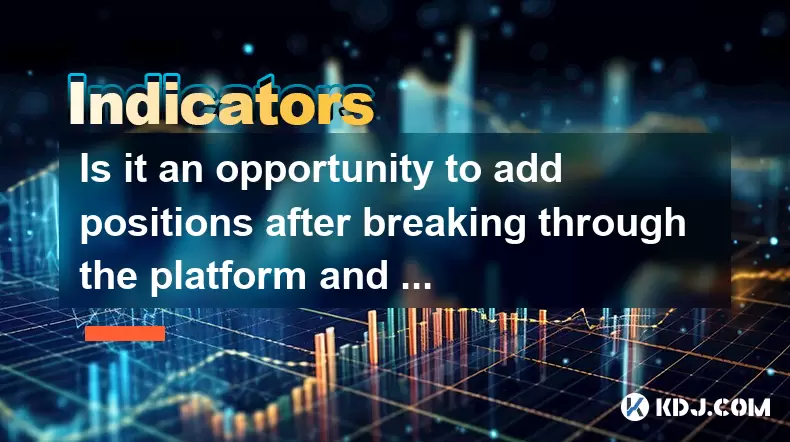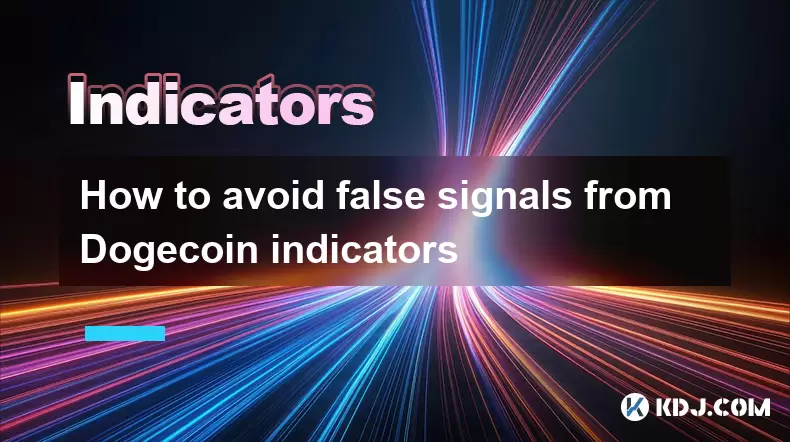-
 Bitcoin
Bitcoin $108,017.2353
-0.81% -
 Ethereum
Ethereum $2,512.4118
-1.58% -
 Tether USDt
Tether USDt $1.0002
-0.03% -
 XRP
XRP $2.2174
-1.03% -
 BNB
BNB $654.8304
-0.79% -
 Solana
Solana $147.9384
-1.76% -
 USDC
USDC $1.0000
-0.01% -
 TRON
TRON $0.2841
-0.76% -
 Dogecoin
Dogecoin $0.1636
-2.09% -
 Cardano
Cardano $0.5726
-1.72% -
 Hyperliquid
Hyperliquid $39.1934
1.09% -
 Sui
Sui $2.9091
-0.59% -
 Bitcoin Cash
Bitcoin Cash $482.1305
0.00% -
 Chainlink
Chainlink $13.1729
-1.54% -
 UNUS SED LEO
UNUS SED LEO $9.0243
-0.18% -
 Avalanche
Avalanche $17.8018
-1.90% -
 Stellar
Stellar $0.2363
-1.69% -
 Toncoin
Toncoin $2.7388
-3.03% -
 Shiba Inu
Shiba Inu $0.0...01141
-1.71% -
 Litecoin
Litecoin $86.3646
-1.98% -
 Hedera
Hedera $0.1546
-0.80% -
 Monero
Monero $311.8554
-1.96% -
 Dai
Dai $1.0000
-0.01% -
 Polkadot
Polkadot $3.3473
-2.69% -
 Ethena USDe
Ethena USDe $1.0001
-0.01% -
 Bitget Token
Bitget Token $4.3982
-1.56% -
 Uniswap
Uniswap $6.9541
-5.35% -
 Aave
Aave $271.7716
0.96% -
 Pepe
Pepe $0.0...09662
-1.44% -
 Pi
Pi $0.4609
-4.93%
Is it an opportunity to add positions after breaking through the platform and stepping back on the neckline?
Traders watch for crypto breakouts from consolidation zones, followed by retests of the neckline for high-probability entry points with strong risk-reward ratios.
Jul 05, 2025 at 10:49 pm

Understanding the Breakthrough and Retest Pattern
In the world of cryptocurrency trading, technical analysis plays a pivotal role in identifying potential entry points. One such pattern that traders often look for is a breakout from a consolidation platform followed by a retest of the neckline. This pattern typically forms after an extended price movement, where the market consolidates in a sideways range before making a decisive move.
A platform breakout occurs when the price moves beyond the established support or resistance level formed during the consolidation phase. Once this happens, it's common to see a pullback or retest of the broken level, now acting as a new support or resistance. This retest provides traders with a second opportunity to enter a position in the direction of the breakout.
Identifying the Consolidation Platform
Before considering any trade based on a breakout and retest, it’s essential to clearly identify the consolidation platform. This phase usually appears on the chart as a period of indecision, where buyers and sellers are in equilibrium, causing the price to move sideways. During this time, volume may decrease, signaling a pause in the trend.
To spot a valid platform:
- Look for a clear horizontal range where the price has bounced multiple times between defined support and resistance levels.
- Ensure that the consolidation period lasts long enough — usually several days or even weeks — to build a strong base.
- Check for decreasing volume during the consolidation, which indicates reduced interest and prepares the ground for a potential explosive move once the breakout occurs.
Confirming the Breakout
Once the price breaks above resistance (or below support in a downtrend), it’s crucial to confirm whether the breakout is genuine or a false signal. Many traders fall into the trap of entering too early, only to be stopped out when the price reverses.
Key factors to confirm a valid breakout include:
- Volume surge: A legitimate breakout is often accompanied by a noticeable increase in trading volume, indicating strong participation from institutional or large retail players.
- Close outside the range: The candle should close decisively beyond the platform boundary. Intraday wicks can be misleading, so always wait for confirmation on the closing price.
- Price action behavior: Watch for strong bullish or bearish candles that show momentum behind the breakout.
Retesting the Neckline
After a successful breakout, the price often returns to test the previously broken level. This retest of the neckline acts as a psychological checkpoint where traders can enter with better risk-reward ratios. If the price holds above the former resistance-turned-support (or below in case of a bearish breakdown), it signals strength in the breakout direction.
To effectively use the retest as an entry point:
- Monitor how the price reacts at the retested level. A clean bounce without significant rejection patterns like doji or hammer suggests continuation.
- Wait for a candlestick confirmation such as a bullish engulfing pattern or a pin bar indicating rejection at the retest zone.
- Use additional tools like moving averages or Fibonacci retracement levels to filter out weak retests and focus on high-probability setups.
Setting Up the Trade Entry and Risk Management
When preparing to add positions after a breakout and retest, risk management becomes critical. Entering blindly without a structured plan can lead to unnecessary losses, especially in the volatile crypto markets.
Here’s how to structure your trade:
- Place your buy order slightly above the retest low (for a bullish setup) or just below the retest high (for a bearish breakdown).
- Set a stop loss below the recent swing low (or above the swing high in a short trade) to protect against a false breakout.
- Aim for a take profit target based on the height of the consolidation platform. For example, if the platform spans $100 in height, project that same distance from the breakout point to set a realistic target.
- Consider scaling into the position by taking partial profits at different levels while trailing the stop loss to lock in gains.
Frequently Asked Questions
Q: What is the difference between a breakout and a fakeout?
A: A breakout is a genuine move beyond a key support or resistance level with sustained follow-through, often confirmed by volume and price action. A fakeout occurs when the price briefly pierces a level but quickly reverses, trapping traders who entered prematurely.
Q: How long should I wait for the price to retest the neckline?
A: There’s no fixed timeline, but most retests occur within a few candlesticks after the breakout. If the price continues moving without a pullback for an extended period, the opportunity might have passed, and the breakout could lose validity.
Q: Can this strategy be applied across all cryptocurrency timeframes?
A: Yes, the breakout and retest strategy works on various timeframes, from 1-hour charts to weekly charts. However, higher timeframes tend to offer more reliable signals due to stronger institutional involvement and clearer patterns.
Q: Should I always wait for a retest before entering a trade post-breakout?
A: No, it depends on your trading style. Aggressive traders may enter immediately after the breakout confirmation, while conservative traders prefer waiting for a retest to reduce risk. Both approaches have pros and cons depending on market conditions.
Disclaimer:info@kdj.com
The information provided is not trading advice. kdj.com does not assume any responsibility for any investments made based on the information provided in this article. Cryptocurrencies are highly volatile and it is highly recommended that you invest with caution after thorough research!
If you believe that the content used on this website infringes your copyright, please contact us immediately (info@kdj.com) and we will delete it promptly.
- Chainlink's Bullish Blueprint: Price Prediction and the Harmonic Pattern
- 2025-07-06 06:30:12
- Ruvi AI: The Audited Token Promising ROI That'll Make Your Head Spin
- 2025-07-06 06:30:12
- Ruvi AI, Token, and Dogecoin: The Next Big Thing in Crypto?
- 2025-07-06 06:35:13
- Dogecoin, PayFi Token, XRP, and Cardano: What's the Hype in the Crypto Space?
- 2025-07-06 04:50:13
- Ruvi AI: The Ethereum Alternative Delivering 100x Token Returns?
- 2025-07-06 05:10:13
- Little Pepe: The Meme Coin Primed for Investment Potential?
- 2025-07-06 04:30:12
Related knowledge

What is the significance of a Dogecoin engulfing candle pattern
Jul 06,2025 at 06:36am
Understanding the Engulfing Candle Pattern in CryptocurrencyThe engulfing candle pattern is a significant technical analysis tool used by traders to identify potential trend reversals in financial markets, including cryptocurrencies like Dogecoin. This pattern typically consists of two candles: the first one is relatively small and indicates the current...

How to manage risk using ATR on Dogecoin
Jul 06,2025 at 02:35am
Understanding ATR in Cryptocurrency TradingThe Average True Range (ATR) is a technical indicator used to measure market volatility. Originally developed for commodities, it has found widespread use in cryptocurrency trading due to the high volatility inherent in digital assets like Dogecoin (DOGE). The ATR calculates the average range of price movement ...

How to avoid false signals from Dogecoin indicators
Jul 06,2025 at 06:49am
Understanding Dogecoin Indicators and Their LimitationsDogecoin indicators are tools used by traders to analyze price movements and make informed decisions. These include moving averages, Relative Strength Index (RSI), MACD, and volume-based metrics. However, these tools can sometimes generate false signals, especially in highly volatile markets like Do...

Dogecoin Donchian Channels strategy
Jul 06,2025 at 02:43am
What Are Donchian Channels?Donchian Channels are a technical analysis tool used to identify potential breakouts, trends, and volatility in financial markets. They consist of three lines: the upper band, which marks the highest high over a specific period; the lower band, which reflects the lowest low over the same period; and the middle line, typically ...

How to use the TRIX indicator for Dogecoin trading
Jul 06,2025 at 12:29am
Understanding the TRIX Indicator in Cryptocurrency TradingThe TRIX indicator, short for Triple Exponential Average, is a momentum oscillator widely used in technical analysis. It helps traders identify overbought or oversold conditions, potential trend reversals, and momentum shifts in an asset's price movement. While commonly applied to traditional mar...

How to measure buying and selling pressure for Dogecoin
Jul 06,2025 at 01:57am
Understanding the Concept of Buying and Selling PressureBuying pressure refers to a situation where the demand for Dogecoin exceeds its supply, often leading to an upward movement in price. Conversely, selling pressure occurs when more investors are eager to sell their holdings than buy, which typically results in downward price action. These pressures ...

What is the significance of a Dogecoin engulfing candle pattern
Jul 06,2025 at 06:36am
Understanding the Engulfing Candle Pattern in CryptocurrencyThe engulfing candle pattern is a significant technical analysis tool used by traders to identify potential trend reversals in financial markets, including cryptocurrencies like Dogecoin. This pattern typically consists of two candles: the first one is relatively small and indicates the current...

How to manage risk using ATR on Dogecoin
Jul 06,2025 at 02:35am
Understanding ATR in Cryptocurrency TradingThe Average True Range (ATR) is a technical indicator used to measure market volatility. Originally developed for commodities, it has found widespread use in cryptocurrency trading due to the high volatility inherent in digital assets like Dogecoin (DOGE). The ATR calculates the average range of price movement ...

How to avoid false signals from Dogecoin indicators
Jul 06,2025 at 06:49am
Understanding Dogecoin Indicators and Their LimitationsDogecoin indicators are tools used by traders to analyze price movements and make informed decisions. These include moving averages, Relative Strength Index (RSI), MACD, and volume-based metrics. However, these tools can sometimes generate false signals, especially in highly volatile markets like Do...

Dogecoin Donchian Channels strategy
Jul 06,2025 at 02:43am
What Are Donchian Channels?Donchian Channels are a technical analysis tool used to identify potential breakouts, trends, and volatility in financial markets. They consist of three lines: the upper band, which marks the highest high over a specific period; the lower band, which reflects the lowest low over the same period; and the middle line, typically ...

How to use the TRIX indicator for Dogecoin trading
Jul 06,2025 at 12:29am
Understanding the TRIX Indicator in Cryptocurrency TradingThe TRIX indicator, short for Triple Exponential Average, is a momentum oscillator widely used in technical analysis. It helps traders identify overbought or oversold conditions, potential trend reversals, and momentum shifts in an asset's price movement. While commonly applied to traditional mar...

How to measure buying and selling pressure for Dogecoin
Jul 06,2025 at 01:57am
Understanding the Concept of Buying and Selling PressureBuying pressure refers to a situation where the demand for Dogecoin exceeds its supply, often leading to an upward movement in price. Conversely, selling pressure occurs when more investors are eager to sell their holdings than buy, which typically results in downward price action. These pressures ...
See all articles

























































































